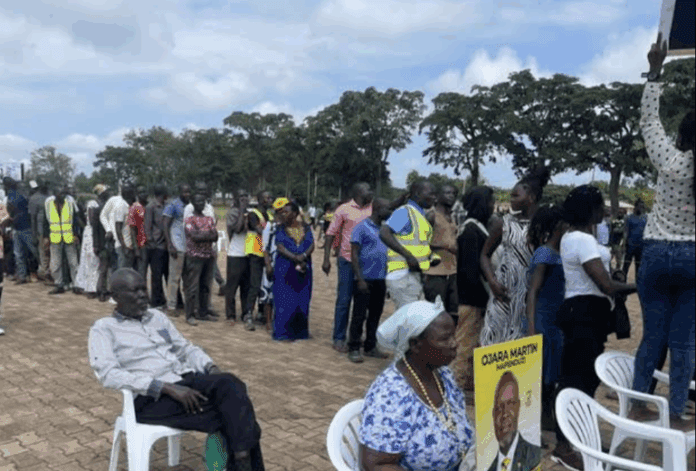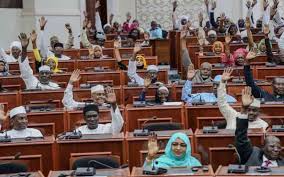During the recent National Resistance Movement (NRM) party primaries in Lwemiyaga County, Sembabule District, former Transport Minister Joy Kafula Kabatsi stood alone.
In a dramatic moment, as voters lined up behind their preferred candidates in plain view, Kabatsi failed to attract any visible support at her polling station.
Stunned, she quietly stepped away from her solitary line and left the voting area without casting a ballot clearly an early and silent concession of defeat.
This moment illustrates the reality of Uganda’s lining up voting method, a system introduced in 2014 through the Local Government Amendment Bill. The system aimed at enhancing transparency in local elections, it replaced the secret ballot with a highly visible process: voters physically queue behind the candidates they support.
Supporters of the system argue that it delivers real-time results, builds candidate confidence, and eliminates disputes.
“There is no way a candidate will claim they were cheated,” one observer noted. “The number of people behind each candidate speaks for itself.”
Prominent figures like Deputy Speaker of Parliament Thomas Tayebwa have endorsed the system evident after his win in the NRM flag for Rubanda North constituency
“I like back-to-back voting because it’s honest. If they love you, they will line up behind you; if they don’t like you, they won’t.”
Proponents argue that lining up demonstrates voter commitment especially with citizens who are willing to endure the rain or scorching sun to show public support for their candidate.
However, many Ugandans are deeply uncomfortable with this method. Critics argue that lining up undermines voter privacy, breeds intimidation, and could even lead to conflict within families or communities.
When voters must publicly declare their political preference, some feel pressured to conform or abstain altogether. In such a scenario, fear of judgment or reprisal replaces free choice. Abstention, rather than expression, becomes the safer path.
Beyond psychological pressure, the method also poses logistical and health challenges. The elderly, the ill, and people with disabilities are especially disadvantaged.
In one tragic case in Nakaseke District, a voter named Living Kuhonda, a lawyer and resident of Gomero Zone, collapsed and died while lining up to vote for incumbent flag bearer Enock Nyongore.
So, while it remains unclear whether he had pre-existing health conditions, the incident highlighted the physical toll such a system can cause.
Some NRM members have pointed to the lining up system as a factor in low voter turnout. The highly public nature of the process, they argue, discourages participation especially among those who fear backlash for their choices.
Many have called for a return to the secret ballot, which safeguards voters’ rights to private, pressure-free decisions.
And yet, others continue to see lining up as a powerful show of democratic engagement; a system that leaves no room for ballot tampering, vote rigging, or bribery. It may be flawed, but it is visible and direct.
This leads us to a crucial question: Should democracy be about being seen or being free?
As Uganda approaches the 2025/2026 elections, it is time to have an honest national conversation about whether the lining up method still serves the country’s democratic values.
Democracy thrives not only on transparency, but on freedom; a freedom to choose without fear, pressure, or shame. While lining up may prevent ballot stuffing or vote buying, it does so at the expense of privacy, dignity, and safety.
A truly democratic voting system should empower every citizen not just to be seen, but to be heard without coercion or consequence.
It may be time to return to the ballot box not simply for secrecy’s sake, but for the protection of individual choice and the dignity of the vote



